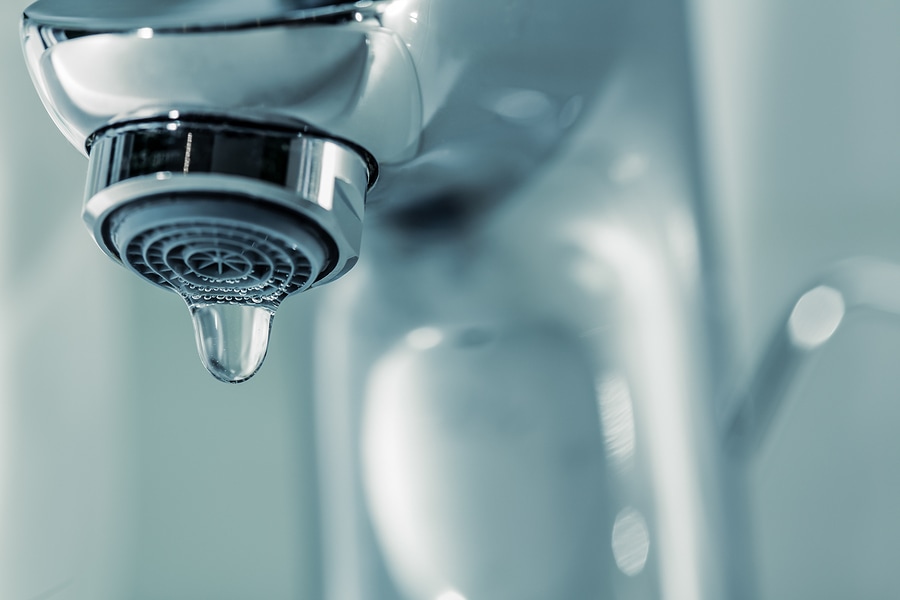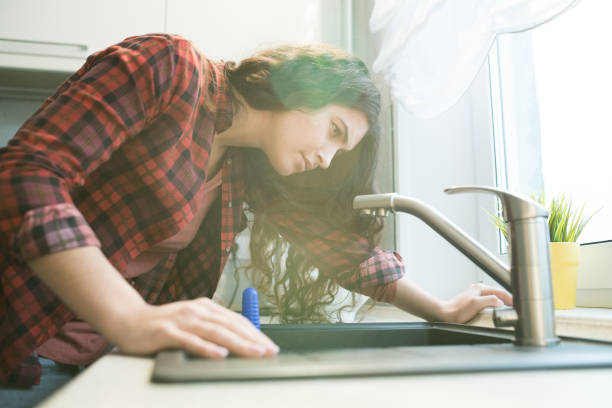They are making a few good pointers on the subject of Water Dripping from Faucet: Why and How to Fix in general in this article in the next paragraphs.

Leaking faucets could look like a small trouble, but their impact exceeds just the aggravation of the sound. From drainage to incurring unnecessary economic costs and wellness risks, disregarding a leaking tap can lead to various consequences. In this post, we'll delve into why it's crucial to address this common family concern quickly and successfully.
Wastefulness of Water
Ecological Impact
Trickling faucets contribute dramatically to water wastefulness. According to the Environmental Protection Agency (EPA), a single tap dripping at one drip per second can waste greater than 3,000 gallons of water per year. This not only strains water resources but additionally impacts communities and wild animals based on them.
Step-by-Step Overview to Fixing a Dripping Faucet
Devices Required
Before trying to deal with a dripping faucet, collect the necessary tools, consisting of an adjustable wrench, screwdrivers, substitute parts (such as washers or cartridges), and plumber's tape.
Typical Tap Issues and Their Solutions
Identify the type of faucet and the certain problem creating the drip. Usual troubles include damaged washing machines, rusty shutoff seats, or faulty O-rings. Refer to maker guidelines or online tutorials for step-by-step assistance on repairs.
Financial Costs
Increased Water Bills
Past the ecological impact, leaking faucets can inflate water costs significantly. The collected wastefulness over time equates into greater utility expenses, which could have been avoided with timely repair services.
Potential Building Damages
Additionally, long term leaking can result in damage to components and surface areas bordering the faucet. Water build-up can create staining, deterioration, and even structural concerns if left unattended, leading to extra repair work expenses.
Health Issues
Mold and Mold Development
The continuous presence of wetness from a leaking tap creates an ideal environment for mold and mold growth. These fungis not just compromise interior air quality however also position wellness threats, specifically for individuals with breathing conditions or allergies.
Waterborne Conditions
Stagnant water in trickling taps can become a breeding ground for microorganisms and various other virus, raising the threat of waterborne illness. Pollutants such as Legionella microorganisms flourish in stationary water, possibly bring about severe illnesses when consumed or breathed in.
DIY vs. Expert Repair
Pros and Cons of DIY Fixing
While some may attempt to deal with a leaking tap themselves, do it yourself fixings come with their own collection of difficulties. Without appropriate understanding and tools, do it yourself attempts can worsen the concern or bring about incomplete fixings, lengthening the problem.
Advantages of Working With a Professional Plumber
Hiring a specialist plumber ensures that the underlying reason for the trickling faucet is attended to successfully. Plumbings have the knowledge and devices to diagnose and fix tap concerns successfully, saving time and reducing the risk of more damage.
Environmental Obligation
Individual Contribution to Conservation
Taking responsibility for fixing dripping taps lines up with broader efforts towards water conservation and ecological sustainability. Every person's activities jointly make a substantial influence on maintaining priceless sources.
Lasting Living Practices
By prioritizing timely repair work and taking on water-saving habits, individuals contribute to lasting living practices that benefit both existing and future generations.
Safety nets
Normal Upkeep Tips
To stop trickling faucets, do regular upkeep such as cleansing aerators, checking for leakages, and changing damaged components without delay. Additionally, consider mounting water-saving tools or updating to extra reliable components.
Relevance of Prompt Repairs
Dealing with dripping taps as soon as they're observed stops more water waste and prospective damage, eventually conserving both water and money in the future.
Effect On Residential Or Commercial Property Worth
Understanding of Well-Maintained Property
Preserving a building in good condition, including dealing with maintenance problems like leaking faucets, improves its perceived value and value among prospective purchasers or renters.
Influence on Resale Worth
Qualities with well-kept plumbing fixtures, including faucets, command higher resale values in the real estate market. Addressing trickling taps can contribute to a favorable impression during residential or commercial property evaluations and negotiations.
Verdict
Resolving a dripping tap goes beyond plain benefit; it's an essential action toward preserving water, decreasing economic expenses, and guarding health and wellness and property. Whether with do it yourself repair services or specialist assistance, acting to take care of trickling faucets is a small yet impactful means to promote responsible stewardship of resources and contribute to a much healthier, extra sustainable future.
How to Fix a Dripping or Leaky Faucet
A leaking faucet is one of the most common problems that homeowners encounter, but it being commonplace doesn’t make it any less annoying. The constant drip drip drip of a leaking bathtub faucet, showerhead, or sink tap can disturb your home’s serenity. Left neglected, a dripping faucet can also result in higher water bills and discoloration or mold growth in your sink or plumbing fixtures.
Fortunately, you don’t have to be a trained plumber to know how to stop a dripping faucet. With some basic tools, replacement parts, and a little patience, leaky faucet repair is a breeze. In this article, we’ll explain what causes dripping faucets and how you can fix them.
What Causes a Leaking Faucet?
Kitchen and bathroom faucets come in all manner of designs, but most involve some combination of valves, O-rings, seals, and washers. The O-ring is usually the weakest link, but any one of these pieces can wear down over time. Heat, moisture, temperature fluctuations, minerals, mold, and movement can contribute to warping and corrosion, breaking the watertight seal. This just comes with the territory of being a homeowner. Everything is always subject to wear and tear, and some component parts of your appliances and fixtures need to be replaced on occasion. At least replacement O-rings are cheap!
More rarely, dripping faucets can be a symptom of excessively high water pressure. Were this the case in your home, you would probably notice that the leak is not isolated to one faucet. Water pressure issues are harder to resolve on your own. We recommend contacting a professional plumber if you suspect your water pressure is too high.
How to Fix a Dripping Faucet
Pipe wrench or monkey wrench Allen wrench set Screwdrivers Old towel or rag Shut off the water.
Before you do anything, you need to turn off the water to keep from drenching your kitchen or bathroom. You should find a valve under the sink and against the wall. Once you’ve turned this valve, try turning the faucet on to confirm that the water source has been cut off.
If you can’t locate your local valve for the faucet you’re working on, you can always shut off the water to the house at the main valve. Of course, this will prohibit anyone from using the sinks, showers, or toilets while you’re working on the faucet that’s giving you trouble.
Plug or block the drain.
You’ll be disassembling the faucet and removing some small bits of hardware. Plug the drain with a stopper or rag to avoid the possibility of a small screw falling into your P-trap.
Take apart the faucet assembly.
There are several varieties of kitchen and bathroom faucets, each with its own manner of assembly. For detailed instructions on how to disassemble your faucet, you can refer to the fixture’s manual or contact the manufacturer. If you know whether you have a ball, disc, cartridge, or compression faucet, you can find detailed schematics online.
In general, you need to begin by removing the faucet handles. You might notice a small screw that you’ll need to remove with a screwdriver or Allen wrench. If you don’t see any visible securing hardware, it’s likely hidden under a decorative cap that can be unscrewed or popped off with flathead screwdriver.
Remove each piece methodically, consulting a schematic when necessary. Take notes or arrange the pieces in such a way to make it easier to correctly reassemble the faucet later.
Remove the cartridge.
Once you’ve removed the handles and securing hardware, you should be able to remove the valve cartridge or stem. Some cartridges will slide right out. Other faucet models will require you to loosen a nut with a pipe wrench before you can remove the valve stem.
Examine the exposed hardware.
With the cartridge or stem removed, inspect the component parts. Check the rubber O-rings for wear and tear. Also examine the seat washer for corrosion or other damage. These pieces are usually the responsible parties for a dripping faucet, but it’s worth inspecting the other component parts while you have the faucet disassembled.
Find replacement parts.
Once you’ve identified which faucet component has failed, find an identical replacement. Your local hardware store should have O-rings, seat washers, and other standard components in stock. If you have a luxury or uncommon faucet, you may have to contact the manufacturer for a replacement part.
It’s a good idea to take your old parts with you to the hardware store so you can compare them with the store’s inventory and be sure you’re purchasing the correct replacement.
Reassemble the faucet.
With your new parts in hand, reconstruct the faucet and handles. Don’t be tempted to overtighten screws or nuts. You might think this could create a better seal, but it can instead damage or bend a delicate part of the assembly and create a new problem for you.
Turn on the water and test the faucet.
The only thing left to do is test your work. Unplug the sink, turn the water back on, and try the faucet. Congratulate yourself on a job well done!
https://www.libertyhomeguard.com/how-to-fix-a-dripping-or-leaky-faucet/

As an avid person who reads on What Causes Leaky Faucets & How To Fix Them, I figured sharing that blog post was worth the trouble. Are you aware of someone else who is enthusiastic about the subject? Why not share it. Thank you for going through it.